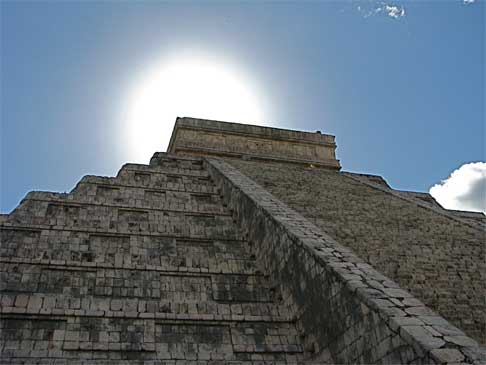
On our first full day in Cancun we signed up for a tour to one of the new Seven Wonders of the World, Chichen Itza, thereby ticking off one of the things on Rick’s ‘Bucket List.’ This well-preserved Mayan ruin is well worth the trip to the interior of the Yucatan Peninsula.
The Mayan civilizations were very advanced. They had their own writing and mathematical systems. They practiced astronomy, tracking the annual cycle of the sun and other heavenly bodies; even predicting when eclipses would occur years in advance. They created two different calendars: the solar calendar which consisted of 18 months of 20 days each plus five unlucky days (18 x 20 +5 = 365 days); and the other for calculating religious ceremonies and festivals and predicting the destinies of people. They built temples in such a way to correspond with the spring and fall equinoxes, where light from the setting or rising sun shone precisely through windows or doorways. Amazing.
There were so many interesting things to see and learn and I took so many photos that I’ve decided to break it down into separate blog entries. This entry will be about the most famous of the buildings here: The Castle, or Pyramid of Kukulcan.
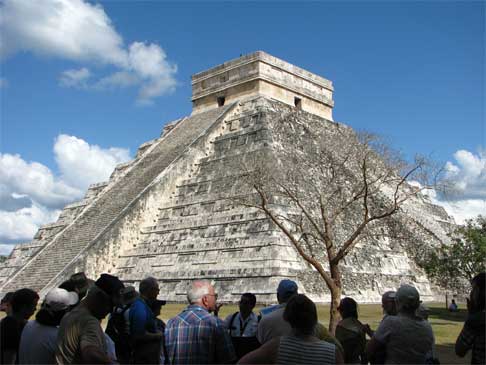
The pyramid has nine terraces symbolizing the planes of the underworld. Up until two years ago you could still climb the stairs and reach the temple at the top, but no more. Maybe it was a good thing since there are 91 steps on each of the four staircases. A significant number since 91 steps x four staircases + the temple on top = 365 for the number of days in a year.
Only two of the staircases have been restored; the other two lie in disrepair. This is partly due to the fact that many of its stones were removed in the early 1920s to build the house of an American, Edward H. Thompson (an anthropologist and a diplomat) who bought the land where Chichen Itza stands. Can you imagine? His house is now a hotel close to the site. Here you can see one of the unrestored staircases on the south side.
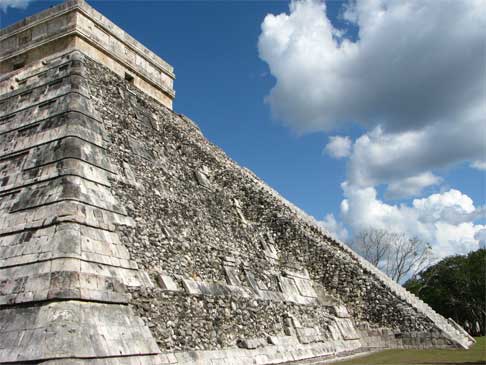
The east staircase with its numbered steps.
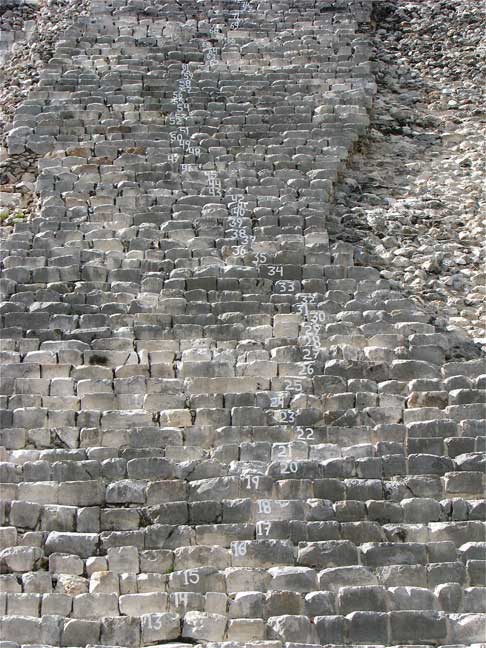
The north staircase is the most impressive and the most important. This staircase ends dramatically, flanked by two colossal heads of feathered serpents, their jaws agape.
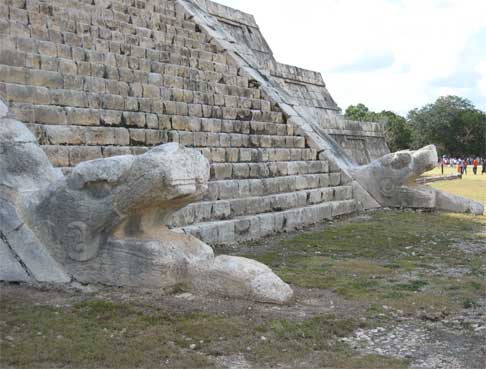
It is also a feat of astronomical genius. At 3:00 p.m. on the spring and fall equinoxes (March 20 and September 21) the sun forms a series of seven isosceles triangles of light and shade on the terraces adjacent to the staircase, giving the impression of an undulating serpent, culminating when it reaches the serpent head at the bottom. It is thought to be symbolic of the return of the god Kukulcan to Earth as the rebirth of the agricultural season.
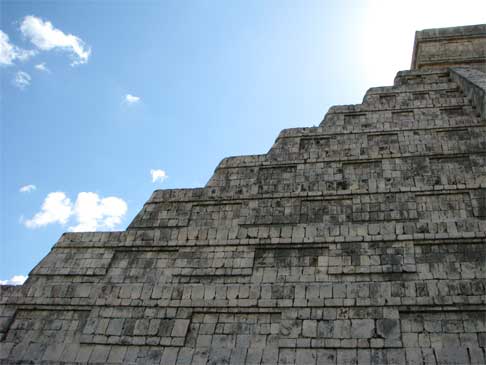
It all makes one feel tiny and insignificant.
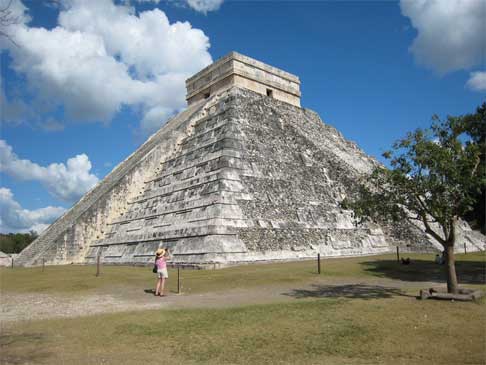
Posted by Lynne on 02/05/2008 at 09:52 AM
Filed under:
Daily Life •
My thoughts •
Travels Beyond New Jersey
